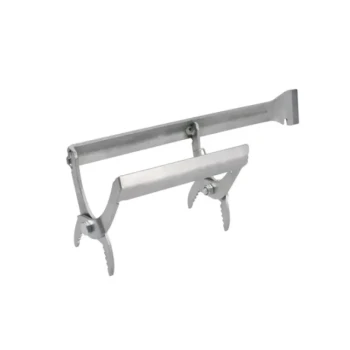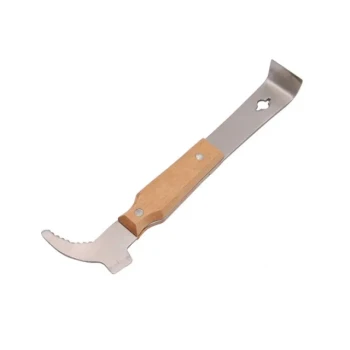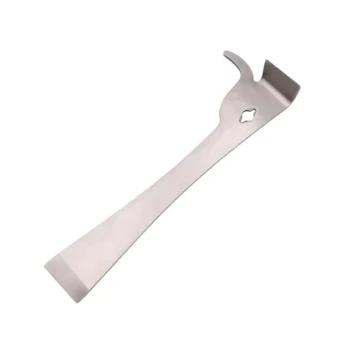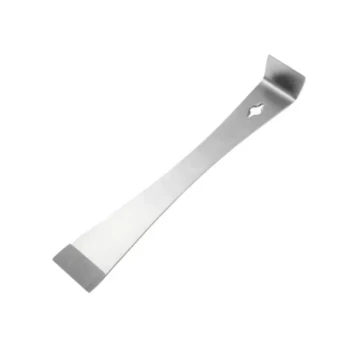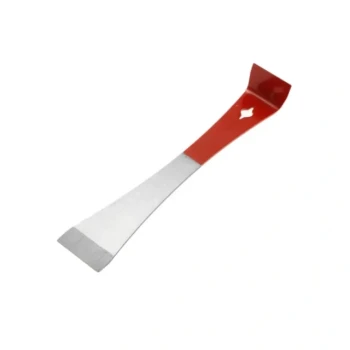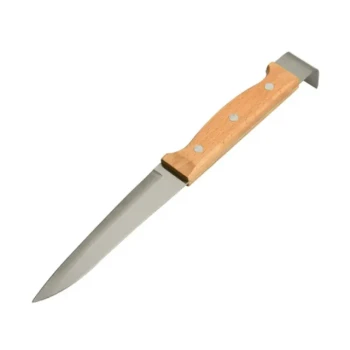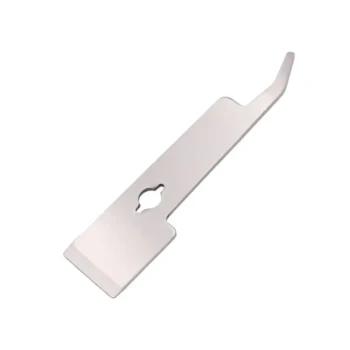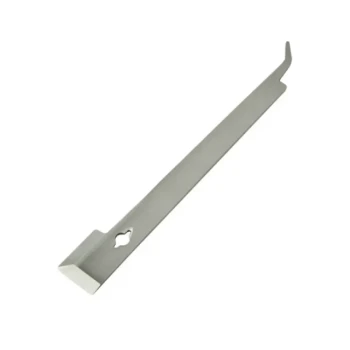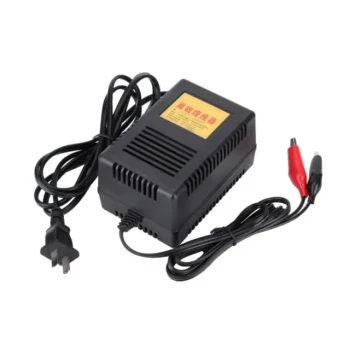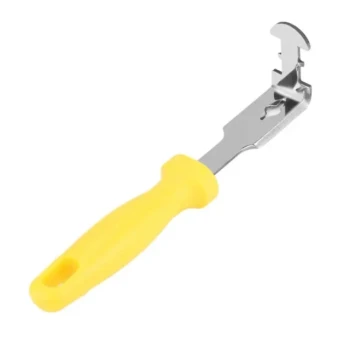The most definitive sign of a queen in your hive is not actually seeing her, but seeing the evidence she leaves behind. You can confirm your hive is "queenright" by identifying the presence of freshly laid eggs, which look like tiny white grains of rice standing upright in the bottom of the brood cells.
The presence of fresh eggs is the most reliable indicator of a healthy, active queen. While physically spotting the queen is helpful, focusing your inspection on finding eggs will give you a faster and more accurate assessment of your colony's health.
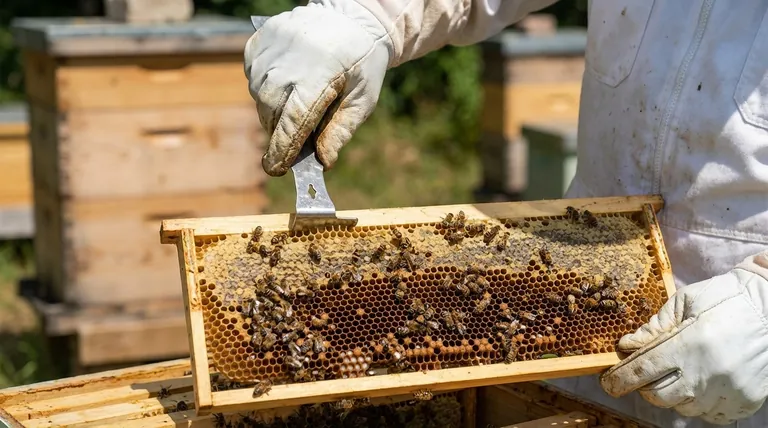
The Primary Sign: Evidence of a Laying Queen
Before you spend valuable time searching for one bee among thousands, learn to read the story the brood frames tell you. A productive queen leaves unmistakable clues.
Look for Fresh Eggs
The clearest sign that a queen was active within the last three days is the presence of eggs.
Carefully pull a frame from the center of the brood box and hold it up to the light. Look for tiny, white specks, each about the size of a pinhead. A healthy queen lays one egg per cell, precisely in the center.
Observe Larvae and Capped Brood
If you see eggs, you will likely also see the next stages of development.
Larvae are small, white, c-shaped grubs swimming in a pool of royal jelly. A solid, contiguous pattern of larvae and capped brood (cells sealed with a wax capping) indicates a healthy, well-mated queen with a strong laying pattern.
Secondary Sign: Physically Spotting the Queen
While not essential for every inspection, positively identifying the queen can be reassuring. She has several distinct features that set her apart from worker bees and drones.
Her Distinctive Appearance
The queen is the largest bee in the colony, but her size is less noticeable than her shape.
Look for a bee with a long, narrow abdomen that extends well past her wings and often has a more pointed tip. In contrast, worker bees have shorter, more rounded abdomens that are almost fully covered by their wings.
Her Behavior and Location
The queen is not just another bee; she is the center of the hive's attention.
She is almost always found on a frame containing eggs and young larvae. You will often spot her because she is surrounded by a "retinue" of attendant worker bees who face her, feeding and grooming her constantly.
Common Pitfalls: Signs Your Hive is Queenless
Understanding the signs of a queen's presence also means recognizing the signs of her absence. If you observe the following, your hive may have a problem.
No Eggs or Young Larvae
The most telling sign of a queenless hive is a complete lack of eggs and larvae younger than three days old. This indicates the queen has been missing for at least that long.
Multiple Eggs Per Cell
If you see cells with two, three, or more eggs, often laid haphazardly on the sides, this is a classic sign of laying workers. This only occurs in a hive that has been queenless for several weeks.
A Change in Hive Temperament
A queenless hive often sounds different, emitting a distinct, low "roar." The colony may also become unusually aggressive and defensive, as the lack of queen pheromones creates a sense of instability.
How to Approach Your Hive Inspection
Use your inspection goal to determine your focus. A calm, efficient check is always better for the bees.
- If your primary focus is a routine health check: Systematically check the central brood frames for the presence of fresh eggs and a solid brood pattern. Once you find them, you can confidently close the hive without needing to find the queen herself.
- If your primary focus is finding the queen (for requeening or marking): Start on frames with new eggs and work slowly. Look for the bee with the distinctive long abdomen and the circle of attendants that moves with her.
By learning to read the signs your colony provides, you can confidently assess its health and ensure its long-term success.
Summary Table:
| Sign of a Queenright Hive | What to Look For | Why It Matters |
|---|---|---|
| Fresh Eggs | Tiny, white, rice-like specks upright in the bottom of cells. | Confirms the queen was active within the last 3 days. |
| Solid Brood Pattern | A contiguous pattern of larvae and capped brood cells. | Indicates a healthy, well-mated queen with a strong laying pattern. |
| Queen's Presence | A long, narrow abdomen; often surrounded by a retinue of attendant bees. | Direct visual confirmation, useful for specific management tasks. |
Ensure Your Apiary's Success with the Right Equipment
A healthy, productive colony starts with a queenright hive and is supported by high-quality, durable beekeeping supplies. Whether you manage a few hives or a large commercial apiary, having reliable equipment is fundamental to your operation's efficiency and profitability.
HONESTBEE is your trusted wholesale partner, supplying commercial apiaries and beekeeping equipment distributors with the essential tools for success. From durable hive bodies and frames to protective gear and honey extraction systems, our products are built to meet the demands of professional beekeeping.
Let's discuss how we can support your business.
Contact our wholesale team today to request a catalog, discuss pricing, and find the right equipment solutions for your scale of operation.
Visual Guide
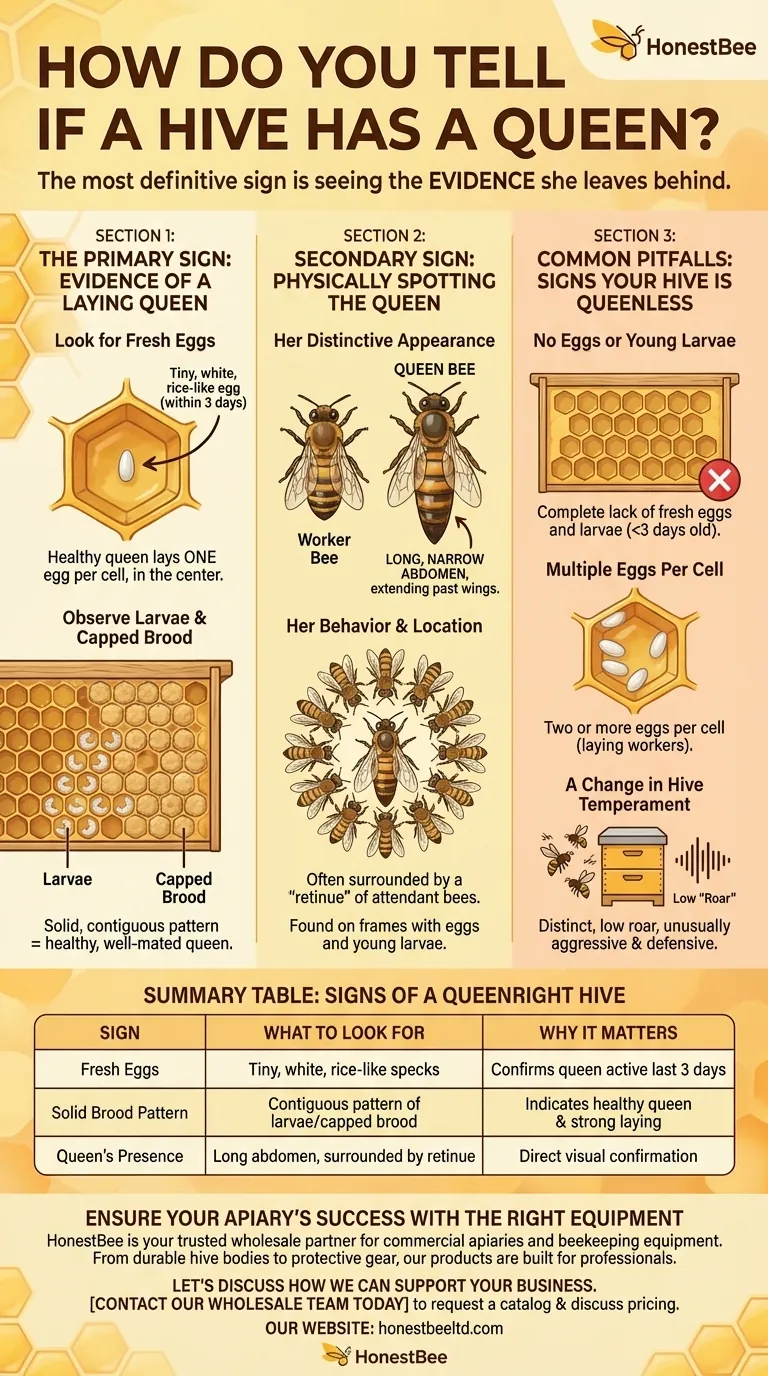
Related Products
- HONESTBEE Advanced Ergonomic Stainless Steel Hive Tool for Beekeeping
- Multi-Function Plier-Style Frame Grip Hive Tool
- HONESTBEE Professional Multi-Functional Hive Tool with Ergonomic Wood Handle
- HONESTBEE Professional Long Handled Hive Tool with Precision Cutting Blade
- Professional Multi-Function Stainless Steel Hive Tool
People Also Ask
- How should beekeepers handle bees when using a hive tool? Master Calm, Deliberate Techniques
- What are the basic tools for beekeeping? Essential Starter Kit for Safe & Successful Hive Management
- How is a hive tool used for scraping and cleaning? Master Hive Maintenance for a Healthy Colony
- What are the features of a regular hive tool? The Essential Multi-Tool for Every Beekeeper
- What tools are used for cleaning frames? A Beekeeper's Simple 4-Tool Guide

